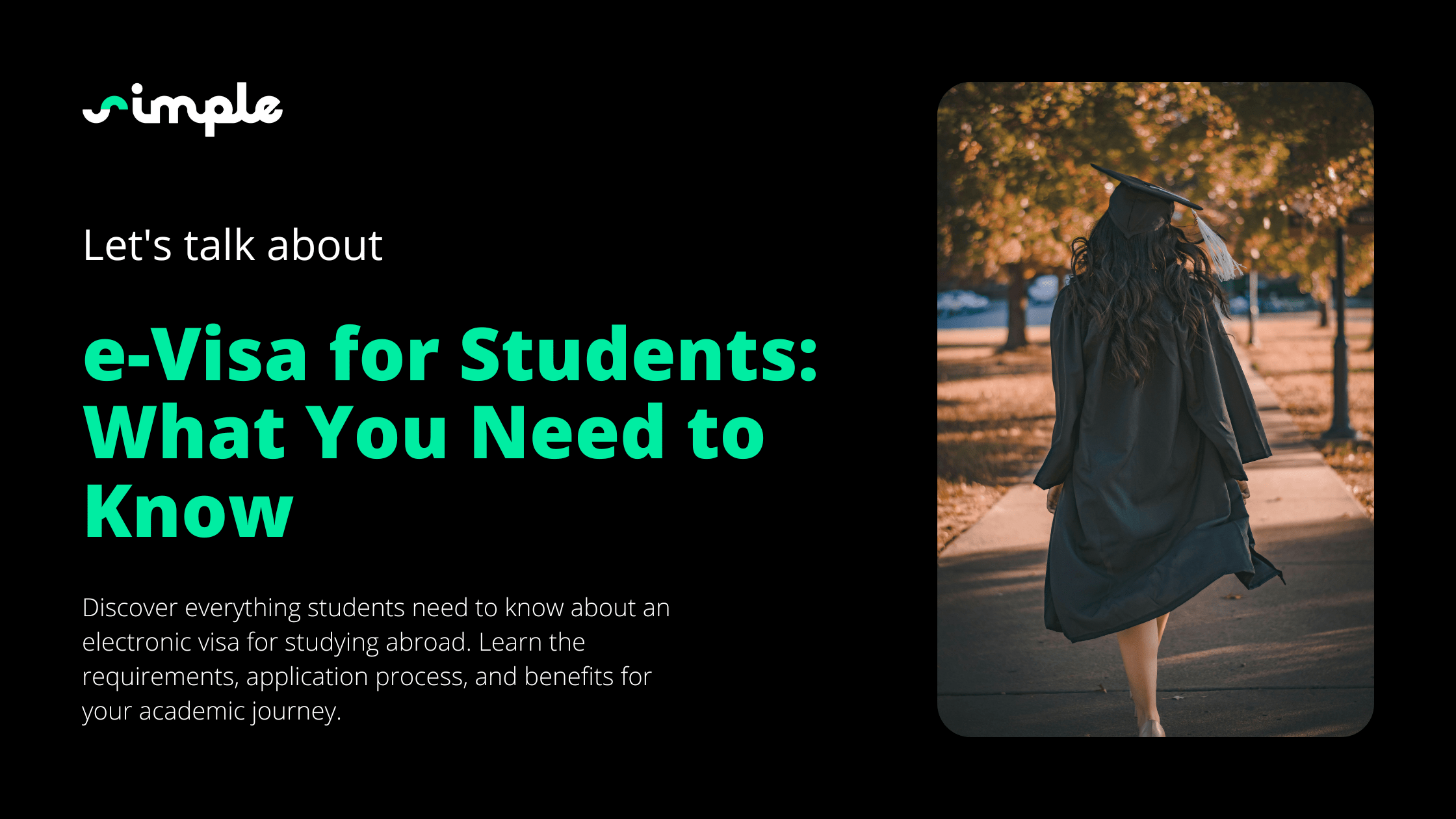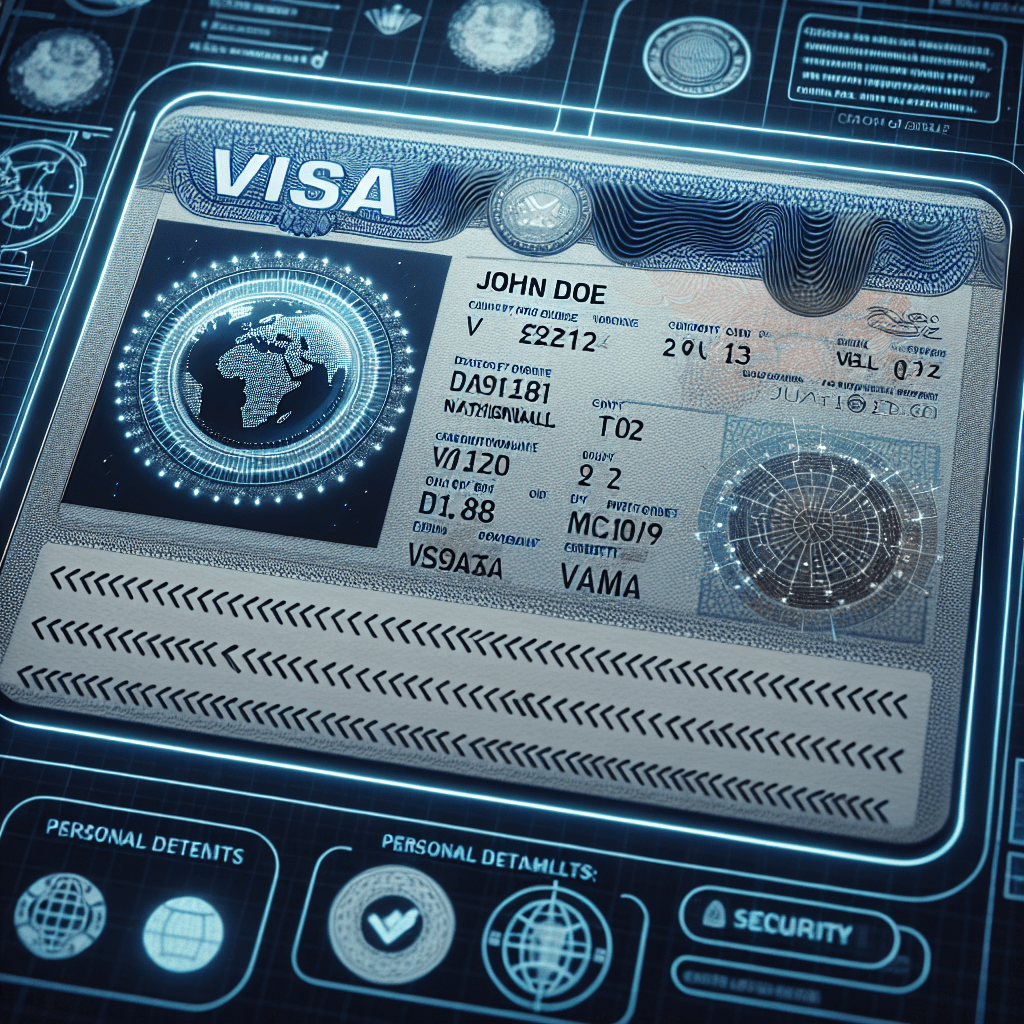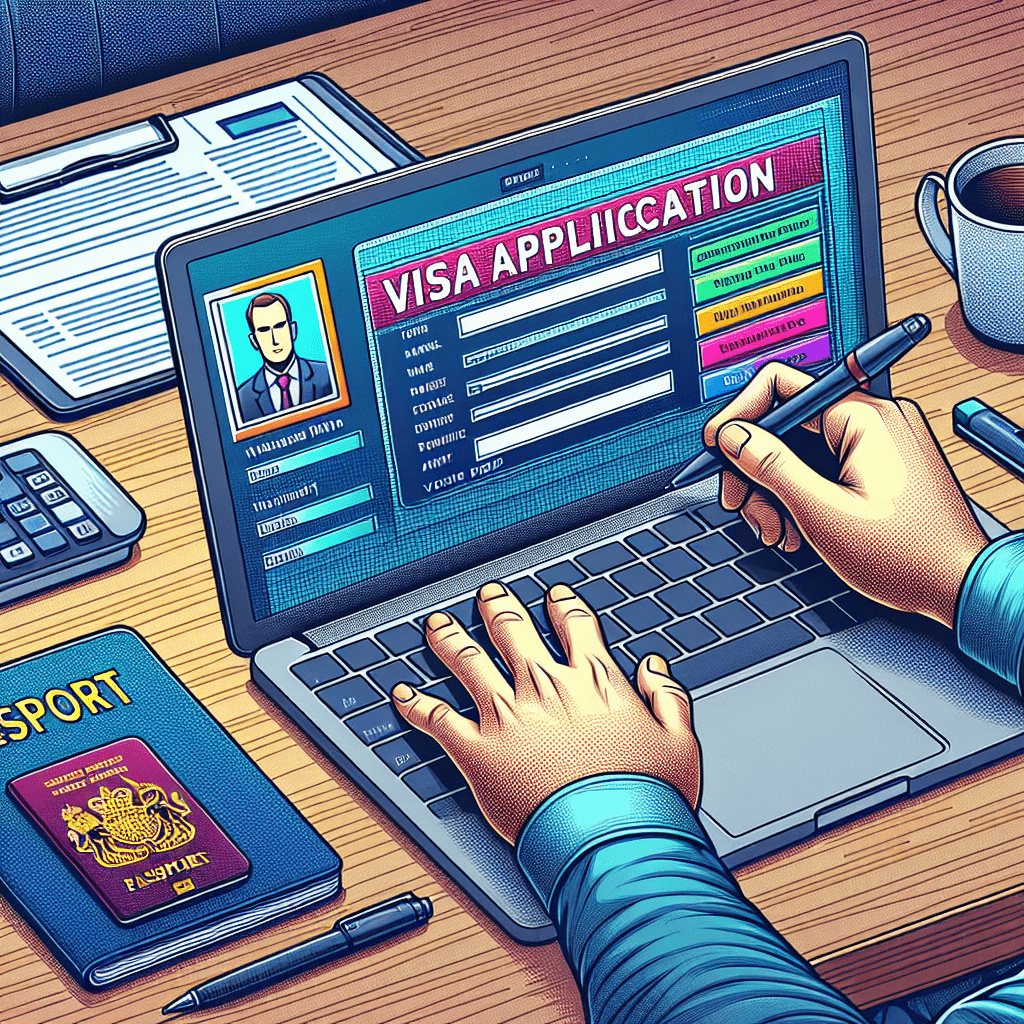**Electronic Visa for Students: What You Need to Know**

The digital age has revolutionized the way we travel, and one of the most significant advancements is the introduction of the e-Visa. This electronic travel authorization simplifies the visa application process, making it more accessible and efficient. For international students, understanding the nuances of e-Visas is crucial as it directly impacts their ability to study abroad. e-Visas offer a streamlined, web-based visa application process that eliminates the need for physical paperwork and in-person visits to consulates. This is particularly beneficial for students who often face tight deadlines and complex requirements. The convenience of an online visa application cannot be overstated, as it allows students to focus more on their academic preparations rather than bureaucratic hurdles. This article delves into the essential aspects of e-Visas that every international student should be aware of. From the application process to the benefits and potential challenges, this comprehensive guide aims to equip students with the knowledge they need to navigate the digital visa landscape effectively. For more detailed information on electronic visas, you can visit our [electronic visa](https://simplevisa.com) page.

Understanding e-Visas
Definition of e-Visa
An e-Visa, or electronic visa, is a digital travel authorization that allows individuals to enter a country without the need for a physical visa sticker or stamp in their passport. This modern approach to visa issuance leverages technology to streamline the application and approval process, making it more efficient and user-friendly.
How e-Visas Function
e-Visas function through an online visa application system where applicants submit their personal information, travel details, and supporting documents via a secure internet portal. Once the application is submitted, it undergoes e-visa processing by the relevant immigration authorities. If approved, the applicant receives a digital travel authorization, which they can print out or store on their mobile device. This electronic entry permit is then presented at the border control of the destination country.
Countries Offering e-Visas for Students
Many countries have adopted the e-visa system to facilitate easier access for international students. Nations such as Australia, Canada, the United States, and several European countries offer e-Visas specifically designed for students. These digital entry visas are tailored to meet the unique needs of students, including longer validity periods and multiple entries to accommodate academic schedules.
Differences Between Traditional Visas and e-Visas
Application Process
The application process for traditional visas often involves multiple steps, including filling out paper forms, scheduling appointments at consulates, and attending in-person interviews. In contrast, the e-visa platform simplifies this process by allowing applicants to complete everything online. This web-based visa application system eliminates the need for physical paperwork and reduces the time and effort required to obtain a visa.
Processing Time and Convenience
One of the most significant advantages of e-Visas is the reduced processing time. Traditional visa applications can take weeks or even months to process, whereas e-visa processing is typically completed within a few days. This expedited timeline is particularly beneficial for students who may need to make last-minute travel arrangements. Additionally, the convenience of an online travel visa means that students can apply from anywhere in the world, without the need to visit a consulate or embassy.
Common Eligibility Requirements for Student e-Visas
Age and Academic Qualifications
Eligibility for student e-Visas generally includes specific age and academic qualifications. Most countries require applicants to be of a certain age, usually 18 years or older, and to have been accepted into a recognized educational institution. Proof of academic qualifications, such as transcripts and diplomas, may also be required as part of the online immigration visa application.
Proof of Admission and Financial Stability
Another critical eligibility requirement for student e-Visas is proof of admission to an educational institution. Applicants must provide an official letter of acceptance or enrollment from the school they plan to attend. Additionally, many countries require proof of financial stability to ensure that students can support themselves during their stay. This may include bank statements, scholarship letters, or financial guarantees from sponsors. Understanding these key aspects of e-Visas can significantly ease the application process for international students. By leveraging the benefits of digital travel authorization, students can focus more on their academic pursuits and less on the complexities of visa applications.

Application Process for Student e-Visas
Step-by-Step Guide to Applying for an e-Visa
Online Application Form Submission
The first step in applying for a student e-Visa is to complete the online visa application form. This form is typically available on the official website of the destination country’s immigration department or a dedicated e-visa platform. Applicants will need to provide personal information such as their full name, date of birth, passport details, and contact information. Additionally, travel details including the intended date of arrival, duration of stay, and the educational institution’s address must be entered accurately. Once the form is filled out, applicants must review all the information to ensure its accuracy before submitting it. Any discrepancies or errors can lead to delays or even rejection of the application. After submission, a confirmation email is usually sent, containing a reference number that can be used to track the application’s status.
Necessary Documents and Uploading Process
The next step involves uploading the necessary documents to support the e-Visa application. Commonly required documents include a scanned copy of the applicant’s passport, a recent passport-sized photograph, and the official letter of acceptance from the educational institution. Some countries may also require additional documents such as proof of financial stability, travel insurance, and previous academic records. The uploading process is straightforward but must be done carefully. Each document should be scanned clearly and saved in the specified format, usually PDF or JPEG. The file size should also comply with the guidelines provided on the e-visa system. Once all documents are uploaded, applicants should double-check to ensure that each file is correctly attached and legible.
Typical Timelines and Fees Associated with e-Visas
Average Processing Times
One of the significant advantages of e-Visas is the relatively short processing time compared to traditional visas. On average, e-visa processing takes between 3 to 7 business days, although this can vary depending on the country and the time of year. Some countries offer expedited processing for an additional fee, which can reduce the waiting time to as little as 24 hours. It’s advisable for students to apply well in advance of their intended travel date to account for any unforeseen delays.
Cost Breakdown and Payment Methods
The cost of obtaining a student e-Visa can vary widely depending on the destination country. Fees typically range from $50 to $200. The payment is usually made online through a secure payment gateway, and most e-visa platforms accept major credit and debit cards. Some countries may also offer alternative payment methods such as bank transfers or digital wallets. It’s important to note that the e-Visa fee is generally non-refundable, even if the application is denied. Therefore, applicants should ensure that all information and documents are accurate and complete before making the payment. Additionally, some countries may charge a separate service fee for using the online immigration visa system.
Common Pitfalls and Tips for a Successful Application
Ensuring Document Accuracy
One of the most common pitfalls in the e-Visa application process is submitting inaccurate or incomplete documents. To avoid this, applicants should carefully review each document for accuracy and completeness before uploading it. This includes checking the spelling of names, ensuring that dates match those on the application form, and verifying that all required documents are included. Missing or incorrect information can lead to delays or rejection of the application.
Avoiding Common Mistakes
Several common mistakes can be easily avoided with a bit of attention to detail. First, ensure that the passport used for the application is valid for at least six months beyond the intended stay. Second, double-check the photograph requirements, as some countries have specific guidelines regarding size, background color, and facial expression. Third, make sure to use a reliable internet connection during the application process to avoid any disruptions or data loss. By following these steps and paying close attention to detail, students can significantly increase their chances of a successful e-Visa application. The convenience of a digital travel authorization allows students to focus on their academic goals without the added stress of navigating a complex visa process.

Benefits and Challenges of Student e-Visas
Major Advantages of Using an e-Visa for Students
Ease of Application and Renewal
One of the most significant advantages of using an e-Visa for students is the ease of application and renewal. The online visa application process is designed to be user-friendly, allowing students to complete their applications from the comfort of their homes. This eliminates the need for multiple trips to embassies or consulates, saving both time and money. Additionally, the renewal process for e-Visas is often just as straightforward, enabling students to extend their stay without the hassle of reapplying from scratch. The convenience of a web-based visa system cannot be overstated. Students can access the e-visa platform at any time, making it easier to fit the application process into their busy schedules. The digital nature of the application also means that students can track the status of their application in real-time, providing peace of mind and reducing anxiety.
Less Paperwork and Faster Processing
Another major benefit of e-Visas is the reduction in paperwork. Traditional visa applications often require a plethora of physical documents, which can be cumbersome to gather and submit. In contrast, the e-visa system allows for the digital submission of all necessary documents, streamlining the entire process. This not only makes the application process more efficient but also reduces the risk of losing important documents. Faster processing times are another key advantage. E-visa processing is typically completed within a few days, compared to the weeks or even months it can take for traditional visas. This expedited timeline is particularly beneficial for students who may need to make last-minute travel arrangements or who are facing tight academic deadlines.
Potential Hurdles and How to Overcome Them
Technical Issues with Online Platforms
While the digital nature of e-Visas offers numerous benefits, it also comes with potential technical challenges. Issues such as website downtime, slow loading times, and difficulties in uploading documents can be frustrating. To mitigate these issues, students should ensure they have a stable internet connection and use a reliable device when completing their online travel visa application. It’s also advisable to save copies of all uploaded documents and application forms in case of any technical glitches. If technical issues persist, most e-visa platforms offer customer support services that can assist applicants. Reaching out to these services can provide solutions and help navigate any technical difficulties encountered during the application process.
Understanding and Meeting Specific Country Requirements
Each country has its own set of requirements for issuing student e-Visas, which can sometimes be complex and difficult to understand. These requirements may include specific documentation, financial proof, and health insurance, among others. To overcome this hurdle, students should thoroughly research the specific requirements of their destination country well in advance of their intended travel date. Consulting with the educational institution’s international office can also provide valuable insights and assistance. These offices often have experience dealing with student visas and can offer guidance on meeting the specific requirements. Additionally, using reputable internet visa services can help ensure that all criteria are met, reducing the risk of application rejection.
Real-Life Examples and Testimonials from Students
Positive Experiences and Success Stories
Many students have successfully navigated the e-Visa application process and have shared their positive experiences. For instance, a student from India who applied for an Australian e-Visa reported that the online visa application was straightforward and took less than a week to process. The student appreciated the convenience of not having to visit the consulate and the ability to track the application status online. Another student from Brazil who applied for a Canadian e-Visa highlighted the ease of renewing the visa online. The student was able to extend their stay for an additional semester without any issues, thanks to the efficient e-visa system.
Lessons Learned from Challenging Cases
While many students have had positive experiences, there are also lessons to be learned from more challenging cases. For example, a student from Nigeria faced difficulties due to technical issues with the e-visa platform. The student overcame these challenges by contacting customer support and receiving step-by-step assistance to complete the application. Another student from China encountered issues with meeting specific financial requirements for a UK e-Visa. By consulting with the university’s international office and providing additional documentation, the student was able to successfully meet the requirements and obtain the visa. These real-life examples underscore the importance of preparation, attention to detail, and utilizing available resources to navigate the e-Visa application process successfully. By understanding both the benefits and potential challenges, students can make informed decisions and increase their chances of a smooth and successful application experience.

Conclusion
Recap of the Significance of e-Visas for International Students The advent of e-Visas has brought about a transformative change in the way international students approach their educational journeys abroad. By offering a streamlined, web-based visa application process, e-Visas eliminate many of the traditional hurdles associated with obtaining a visa. The convenience of an online visa application, coupled with faster processing times and reduced paperwork, makes e-Visas an attractive option for students worldwide. The ability to track application status in real-time and the ease of renewing visas online further enhance the appeal of this digital travel authorization. For international students, understanding the nuances of e-Visas is crucial. The simplified application process allows students to focus more on their academic preparations rather than getting bogged down by bureaucratic procedures. Moreover, the flexibility and efficiency of e-visa systems can significantly reduce the stress and uncertainty often associated with visa applications. By leveraging the benefits of digital visa approval, students can ensure a smoother transition to their new academic environments. Encouragement to Consider e-Visas for a Smoother Educational Journey Abroad Given the numerous advantages, international students are strongly encouraged to consider e-Visas as their preferred method of obtaining travel authorization. The ease of application and renewal, coupled with the reduced need for physical paperwork, makes e-Visas a practical and efficient choice. By opting for an electronic travel permit, students can save valuable time and resources, allowing them to concentrate on their studies and other important aspects of their educational journey. While there may be potential challenges, such as technical issues or specific country requirements, these can be effectively managed with proper preparation and the use of available resources. Real-life examples and testimonials from students who have successfully navigated the e-Visa process serve as a testament to its efficacy and convenience. By taking advantage of the digital entry visa system, students can ensure a hassle-free and successful application experience. In conclusion, e-Visas represent a significant advancement in the realm of international travel for students. The benefits far outweigh the potential challenges, making e-Visas a viable and attractive option for those seeking to study abroad. By embracing this modern approach to visa applications, students can look forward to a smoother, more efficient, and less stressful educational journey.